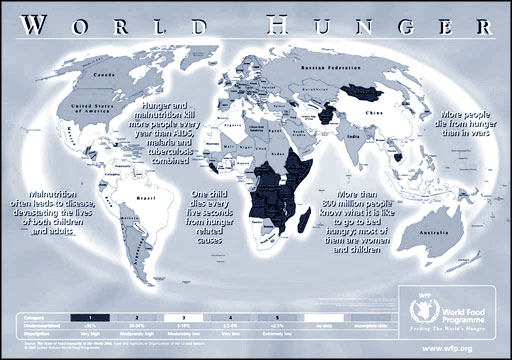Hunger rarely makes headlines
By Indeewara THILAKARATHNE
Although the issue of hunger has been conveniently put into the
backburner of public discourse, it has become a focused area against the
back-drop of drastic drop in food production and rising oil prices. In
Sri Lanka, in plantation sector and pockets of poverty-ridden
communities in urban areas have been identified as highly affected by
hunger. In Asia-Pacific region, three major aspects of hunger are
chronic which is caused by inadequate purchasing power, hidden hunger
caused by malnutrition, deficiency of micronutrients and transient
hunger caused by disruption in communication due to draught, flood and
cyclone.
 A media survey of seven developing countries in the Asia Pacific
Region, carried out by Panos Institute Sri Lanka over a three-month
period revealed the extent and quality of the coverage given to the
issue. A media survey of seven developing countries in the Asia Pacific
Region, carried out by Panos Institute Sri Lanka over a three-month
period revealed the extent and quality of the coverage given to the
issue.
"The survey of English Language newspapers in Bangladesh, Cambodia,
India, Nepal, Pakistan, Sri Lanka and Thailand found that hunger was
rarely the main focus of articles or editorials. It was reported as a
side issue in stories about troubled economies, agricultural problems or
natural disasters. There was little pro-active or investigative
reporting of hunger and its underlying issues, The emphasis of the
coverage was on statistics and strategies rather than the human face of
hunger. Few newspapers gave real prominence to the issues of hunger on
their front pages or in their influential editorial columns. The
reporting of hunger across the region was inevitably marked by national
variations and preoccupations. However, there were common threads. The
majority of the 1,236 articles published in the 29 newspapers monitored
were neither pro-active nor the result of independent investigation into
underlying causes or the impact on individuals. Instead, stories were
written as a reaction to events, relying on statements from
international agencies or governments, announcements by experts, or
organised events such as protests to prompt coverage.
Income disparity, poverty and change of food habits are some of the
causes of hunger in Sri Lanka. Especially, in plantation sector and
poverty-ridden urban areas, the major cause of hunger is inability on
the part of impoverished population to purchase food in adequate
quantities. In several instances, as household income is basically spent
on education of the children, a very little attention is paid to their
food requirements and the nutrient quality and quantity of the meals.
The change of food habits due to busy life style has also contributed to
this situation. " stated the report. Although Sri Lanka belongs to the
middle level of countries in terms of hunger index, the issue needs
attention on priority basis as there is a possibility to turn the
situation worse with the on-set of global financial crisis. A seven
point agenda based on global experience of hunger has been made by FAO
and UNDP, spelling out seven elements of priority areas in combating
hunger.
Focus on targeted interventions such as school feeding is one of the
prioritized areas on the agenda. It has been found out such direct
interventions have yielded duel benefits of providing nourishment and
encouraging school attendance, especially of girls. In Sri Lanka, school
feeding programme has been successfully implemented. It has also
important to measure the outcome of development in terms of hunger
impact. Although several Asia-Pacific countries have achieved impressive
economic growth, there is little or no impact on hunger reduction.
Reviving public investment in agriculture, at both national and
international level has also been cited as an important measure. Between
1990 and 2007, on average, public investment on agriculture has been
reduced by 1.5 per cen. However, the impact of National Drive for Local
Food Production on hunger in Sri Lanka has not been counted for this.
Public investment will have a catalyst effect on increase of
productivity through a mix of quality extension services, farm to market
road and substantial investments physical and infrastructure with
application of latest knowledge to increase productivity. For the long
term growth, it is also important to make substantial investments in
Research and Development. Building a national and global coalition to
combat hunger, making primary education mandatory, subsidies to
consumers for staple-foods and reviewing global food policy to encourage
farmers in low-income countries back to cultivations are some other
priority areas on the agenda.
Inaccessibility to food, chronic poverty, change of food habits and
life styles has contributed to increase hunger in Sri Lanka.
|


